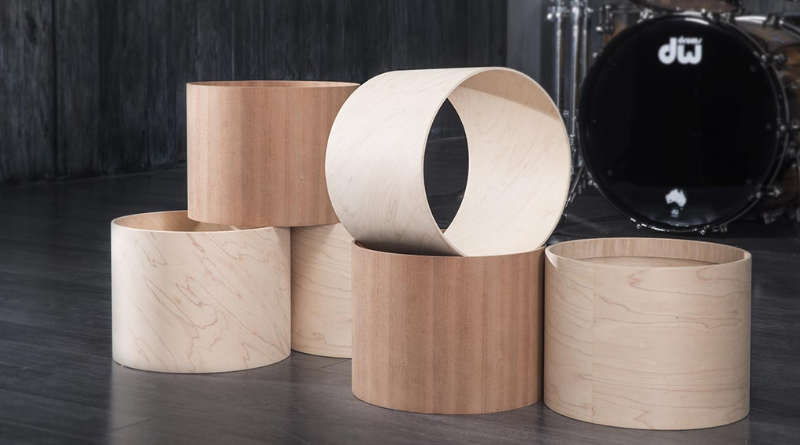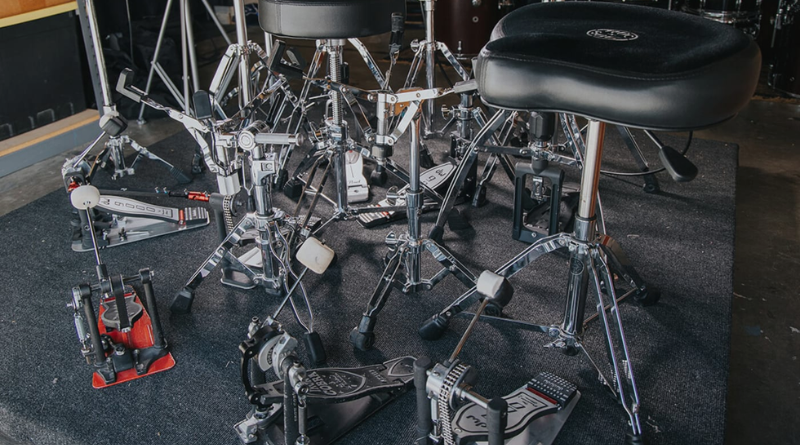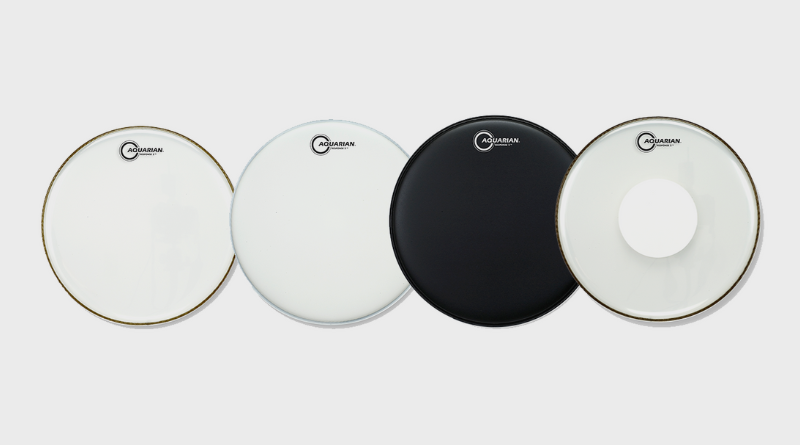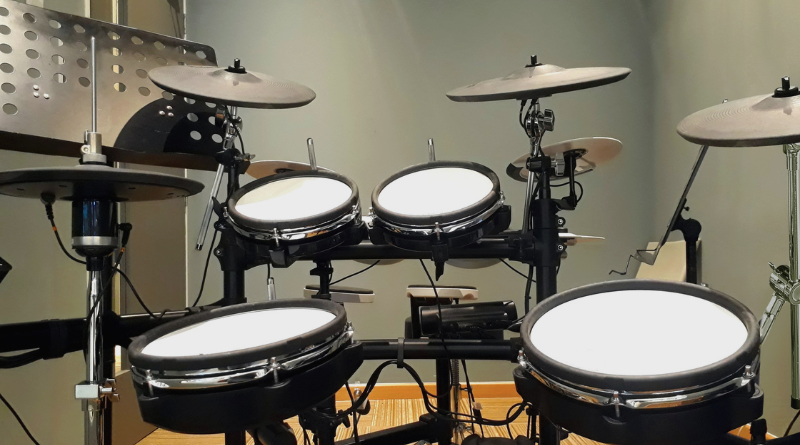Have you ever wondered what drums are made of? It’s an interesting question with a fairly lengthy answer. Since drum sets are so large, there are various materials that are used to make the different parts.
Drums are built from a combination of wood, metals, and plastics. All these things work together to create shells that produce different tones when you hit them.
There are a few finer details of these materials, though, and we’re going to take a deep dive into each of them.
Here’s a full breakdown of everything a drum shell is made of.
Contents
Drum Shells

Wood Types
Most of the body of every drum is made from wood. Drum manufacturers shape wood into the shell, and they use various kinds of wood to make those shells.
A lot of the drum’s tone will depend on what wood the shell is made from.
Here’s a list of a few popular wood types, along with their tonal qualities:
- Poplar – Strong low-end with soft mids and highs. Mostly found in cheaper drums.
- Maple – Balanced mids, highs, and lows. Excellent versatile wood.
- Birch – Strong highs that give the drums more attack. Great for live settings.
- Mahogany – Rich low-end with balanced mids and highs.
- Oak – Mostly balanced with quick sustain from all the drums.
Metal Types
You’ll also find a lot of snare drums that are made from metal. Toms and bass drums never have metal shells, as that would make them far too heavy.
Here’s a list of popular metals used for snares, along with their tonal qualities:
- Brass – Very articulate and extremely versatile.
- Aluminum – Plenty of low-end when played hard, balanced tone when played softly.
- Steel – Very cutting and bright.
- Copper – Dark sounds with a lot of mysterious overtones.
- Bronze – Very expressive with balanced mids, highs, and lows.
These metals and woods form the body of each drum shell, while drum hardware and drumheads hold them together and make them playable.
Drum Hardware

Counterhoops
Counterhoops are the metal rims that get placed on the top and bottom of every drum shell. These are mostly there to keep the drumheads in place and allow you to tune, but they also contribute slightly to how each drum sounds.
The two main types of counterhoops are triple-flanged hoops and die-cast hoops. Triple-flanged hoops are very common, and you’ll find them on most kits.
Die-cast hoops are higher in quality. They’re heavier, and they give the drums stronger attacking tones.
Bass drums always have wooden hoops instead of metal ones.
Lugs
Lugs are the metal pieces that are attached to the sides of every drum shell. Lugs have space for screws to be screwed in, and they’re designed to handle an incredible amount of tension.
Most drum shells have eight lugs, but higher-quality snare drums typically have ten.
Some lugs have screw holes on both sides for the top and bottom rims, while other drum shells have completely separate lugs for each rim.
Lugs come in all shapes and sizes, and the design of the lugs on a shell is what typically gives it its unique appearance compared to other drums.
Tension Rods
Tension rods are the screws that connect to the lugs around a drum shell. Drum shells are designed so that the tension rods stick through the counterhoops and then fasten to the lugs to keep everything locked in place.
You use the tension rods to tune a drum shell. The tighter they are, the higher the tone will be of the drum. All the lugs must be tightened evenly to get a pleasant tone from the drum, though. If they aren’t, the drum will produce harsh overtones.
Tension rods are mostly similar in design across different drum kits.
Drumheads

The drumheads are the final piece of the puzzle when it comes to a drum shell’s design. Every drum has two drumheads, known as the batter head and the resonant head.
The batter head is the one that goes on the top part of the shell. It’s the drumhead that you hit when you play the drum.
The resonant head goes on the bottom side of a drum shell. Resonant heads control a lot of the drum’s tone and resonance, and they’re not designed to be hit.
There are hundreds of different drumheads available, and each of them has various textures and tonal qualities. Drummers choose different drumheads for their kits according to those qualities.
Electronic Drums

Electronic drums are built differently from acoustic drums, as they work digitally. The hardware used to set up an electronic drum kit is mostly the same, but the pads aren’t.
Here are what various electronic drum pads are made of.
Rubber
Rubber pads are the hardest, and you’ll find them on most inexpensive electronic drum kits. They have a lot of rebound, and they’re typically the loudest pads you get on electronic drums.
You don’t get as many electronic kits with rubber pads as you did a decade ago, as most brands are moving toward using mesh heads.
Mesh
Mesh drum pads are made from a mesh material that is designed to feel resemblant to acoustic drumheads. While mesh pads still feel quite different, you get similar responsiveness when you play them.
The cool thing about mesh drum pads is that you can adjust the tension of their surface area, similar to how you can tune an acoustic drum shell.
Silicone
Silicone drum pads are purely used by Yamaha. The brand developed the TCS pads for all their kits, and they feel very close to mesh heads. However, many argue that they feel a bit more natural to play.
Final Thoughts on What Drums Are Made Of
When you know what all drums are made of, it gives you a better idea of what you’re getting when you buy a drum set.
Some drums have unique hardware components as their selling point, so understanding how those work along with the shells will keep you more informed.
Understanding shell makeup will also allow you to fix a drum shell if something goes wrong. You’ll know whether it’s a counterhoop or lug issue, and then you can find replacement parts easily.